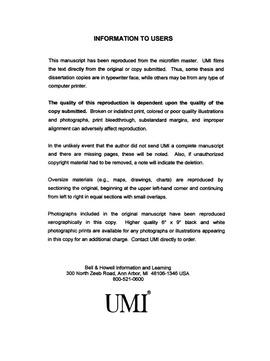| dc.contributor.advisor | Suflita, Joseph M., | en_US |
| dc.contributor.author | Caldwell, Matthew Edward. | en_US |
| dc.date.accessioned | 2013-08-16T12:31:07Z | |
| dc.date.available | 2013-08-16T12:31:07Z | |
| dc.date.issued | 2000 | en_US |
| dc.identifier.uri | https://hdl.handle.net/11244/6018 | |
| dc.description.abstract | The research reported here expands the range of knowledge for anaerobic hydrocarbon metabolism, as well as provides a sound foundation for the microbial destruction of compounds once thought to be completely recalcitrant under anaerobic conditions. | en_US |
| dc.description.abstract | Using inocula from a variety of anoxic environments that varied in exposure, extent of hydrocarbon contamination and redox potential, studies were undertaken to examine the prospective for the microbial degradation of benzene under strictly anaerobic conditions. Results indicated that when chronically hydrocarbon-contaminated sediments were used as a source of inoculum, the anaerobic degradation of benzene under sulfate-reducing, Fe(III)-reducing and methanogenic conditions was achievable. Confirmation of benzene mineralization was accomplished by the recovery of 14CO2 from radiolabeled benzene in sulfate- and Fe(III)-reducing incubations, and the recovery of 14CO2 and 14CH4 in methanogenic incubations. The latter finding was the first confirmation of benzene degradation with carbon dioxide serving as the terminal electron acceptor. | en_US |
| dc.description.abstract | Benzene is the simplest aromatic hydrocarbon, yet poses one of the greatest environmental health risks due to its high water solubility and the fact that it is a known carcinogen. Often times benzene is introduced into the subsurface due to spillage or the leaking of gasoline from underground storage tanks. The large influx of carbon often results in the depletion of oxygen reserves due to heterotrophic respiration during metabolism of the more labile compounds thereby producing anoxic conditions. Thus, the metabolic fate of benzene in anaerobic environments has come under intense scrutiny. | en_US |
| dc.description.abstract | Further examination of the metabolic fate of benzene in each of these microbial enrichments indicated the appearance of phenol and benzoate as putative intermediates. Using 13C-benzene as a starting material, 13C-phenol and 13C-benzoate were detected during the course of degradation under sulfate-reducing conditions. Further, 13C-phenol was also detected in Fe(III)-reducing and methanogenic enrichments, however no evidence for labeled benzoate was obtained. Nonetheless, these findings are the first to confirm the importance of benzoate as an intermediate during anaerobic benzene decay. | en_US |
| dc.description.abstract | To further investigate the susceptibility of hydrocarbons to anaerobic decay, experiments were carried out in which chronically petroleum-contaminated marine sediments were amended with an artificially weathered crude oil. Under sulfate-reducing conditions, the results obtained indicated an almost complete loss of n-alkanes from the oil within 201 days of incubation. The mineralization of alkanes was confirmed using 14C-14,15-octacosane (C28H58) with greater than 97% of the amended radioactivity recovered as 14CO2. The degradation of n-alkanes from C15 to C34 in length, extend the range of straight chain aliphatic compounds known to be amenable to anaerobic biodegradation. Further, these results indicate that the extensive alteration of n-alkanes can no longer be considered a defining characteristic of aerobic oil biodegradation processes alone. | en_US |
| dc.format.extent | xv, 99 leaves : | en_US |
| dc.subject | Benzene Biodegradation. | en_US |
| dc.subject | Engineering, Environmental. | en_US |
| dc.subject | Microbial ecology. | en_US |
| dc.subject | Biology, Microbiology. | en_US |
| dc.subject | Oil pollution of soils. | en_US |
| dc.title | The microbial metabolism of benzene and crude oil under diverse anaerobic conditions. | en_US |
| dc.type | Thesis | en_US |
| dc.thesis.degree | Ph.D. | en_US |
| dc.thesis.degreeDiscipline | Department of Microbiology and Plant Biology | en_US |
| dc.note | Adviser: Joseph M. Suflita. | en_US |
| dc.note | Source: Dissertation Abstracts International, Volume: 61-07, Section: B, page: 3404. | en_US |
| ou.identifier | (UMI)AAI9980454 | en_US |
| ou.group | College of Arts and Sciences::Department of Microbiology and Plant Biology | |
